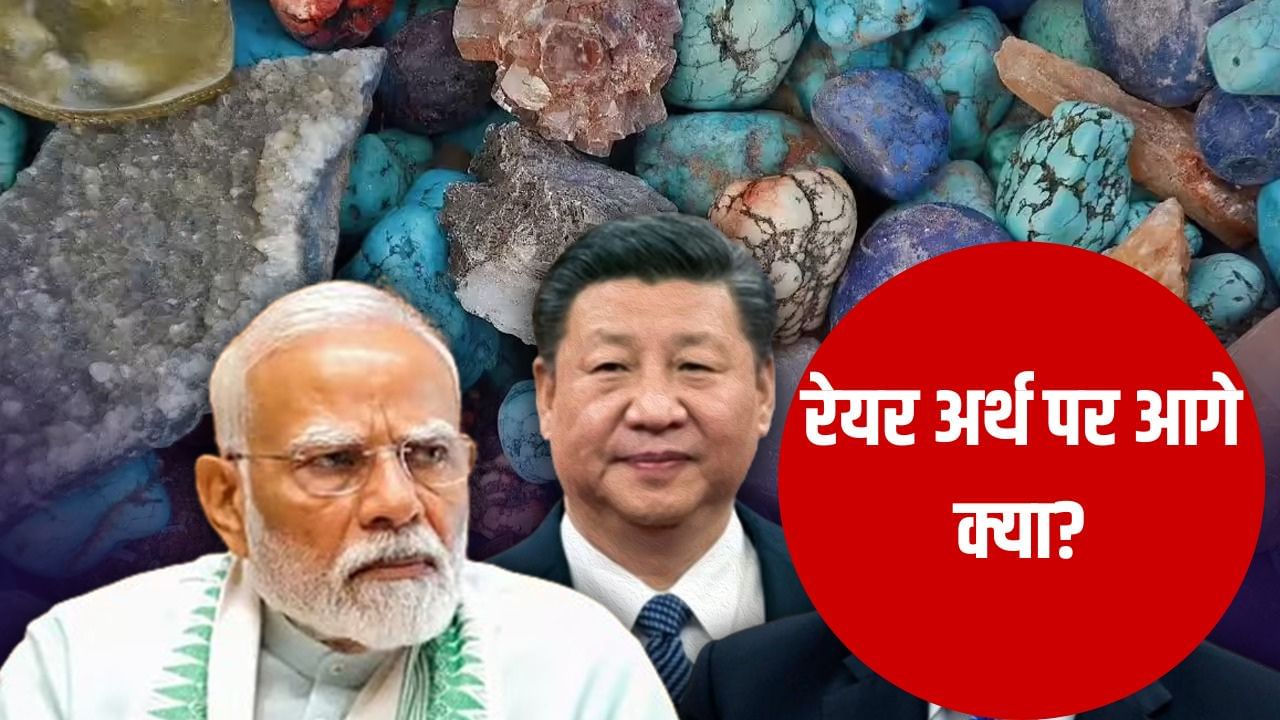rare earth metal
Since the change of power in America, many decisions have been taken in the world keeping ego at the center of the economy, the initial impact of which was on other countries including India and if the situation remains like this then its consequences may become worse in the future. First, as soon as Trump came to power, he scared the world with his tariff policies, then he also increased the application fees for H-1B visa, then China also banned the supply of rare earth metals. However, China has definitely given some relaxation for India. But that is insufficient. The way China has established its rule over rare earth metals. That is not a good sign for the global world. Let us understand in detail how and why India lagged behind China in the matter of rare earths.
India’s rare earth journey began in 1950 with the establishment of a public sector undertaking (PSU) called Indian Rare Earth Limited. This was a big step to enter the sector which later became the backbone of the global electronic industry. But initially due to reasons like lack of demand, IREL’s initial focus on other industrial minerals obtained from beach sand and regulatory hurdles, India remained away from this opportunity.
Increased dependency on China
Due to low demand and India’s technology dependence on China, import of finished magnets became cheaper. Apart from this, India’s rare earth elements are found in monazite sand. In which thorium is also a radioactive element. From putting them in the nuclear category to the strict and lengthy regulatory processes required to get approval, all this kept India away from the opportunity of rare earths. Excessive government control in this sector has also been a big challenge. The long duration of projects and lack of incentives have almost kept the private sector away from this field. India has the fifth largest rare earth reserves in the world, but its contribution to global production is less than 1%.
India’s domestic rare earth element production capacity is about 3,000 tonnes. Of this, IREL produces about 500 tonnes of neodymium-praseodymium oxide every year, which is the most important raw material for making rare earth permanent magnets. At present IREL is the only company which produces NDPR on a large scale. However, according to data from the Ministry of Heavy Industries, in 2024-25, India imported 43,610 tonnes of REPM from China, which is used in EVs, aerospace, computers etc. Almost 90% of REPM came from China.
What is IREL?
IREL, operating under the Department of Atomic Energy, is running a special plant for REPM based on indigenous technology at Visakhapatnam, Andhra Pradesh. The government has focused on reducing dependence on China for rare earth minerals, but IREL has been running without a chairman and managing director for the last one year. In July 2025, the Public Enterprise Selection Board had suggested the name of Sharda Bhushan Mohanty for the post of full-time CMD. But this appointment is still awaiting the approval of the Appointments Committee of the Cabinet.
The company has been profitable since 1997-98 and is focusing on increasing its production capacity, supporting value-chain industries and enhancing research and development through its facilities. But experts say that its production capacity is not enough to meet the increasing demand for REPM in India. China dominates global rare earth production. China’s total rare earth mining quota in 2024 was about 2,70,000 tonnes. Two companies, China Northern Rare Earth Group and China Rare Earth Group, control the majority of it.
According to experts in Moneycontrol report, India needs more companies for exploration, mining and processing of REPM. IREL cannot do this work alone. IREL primarily produces Mixed Rare Earth Chloride (MreCl) on a large scale, a light rare earth element. IREL produced 5,872 tonnes of MRECL in FY 2024, which is 16% more than 5,034 tonnes in FY 2021. While the total capacity of the company is more than 11,000 tonnes. IREL’s profit after tax in FY 2024 was Rs 1,012 crore, which is 25% more than last year and 246% more than 2021.
India has option on rare earth
Providing incentives for mining and processing of rare earth elements, implementing new technology and reducing government delays. CRISIL Senior Practice Leader Satnam Singh said that India has not done enough exploration yet, so PSUs like IREL and Kerala Minerals and Metals Limited can be encouraged for deep exploration. India has mining experience in coal, limestone and iron ore. But India’s capacity is limited when it comes to rare earths. We did not do enough mining and when China imposed restrictions the problem increased further. At present, China’s share in the production of rare earth elements is about 70%. America contributes about 12% and India contributes less than 1%.
